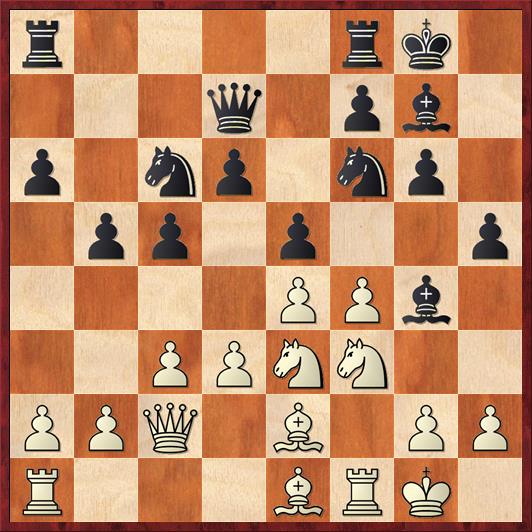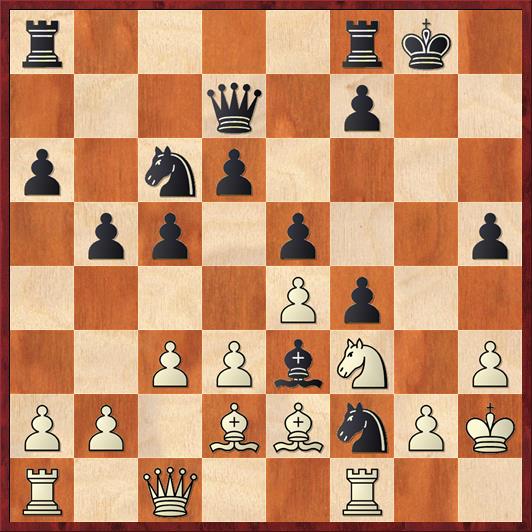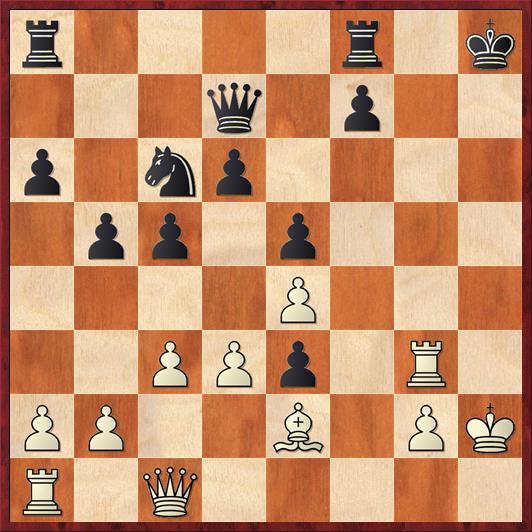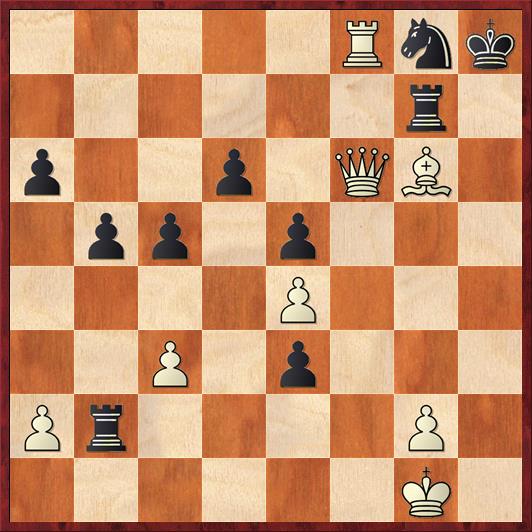Maybe I show too many computer chess games in this here blog… but here we go again. I love playing against Shredder, because we get some of the wildest positions I’ve ever seen. This week I was able to threaten one of the rarest moves in chess – checkmate with a king!
The ultimate and most famous example of checkmate with a king was the game in 1912 between Edward Lasker and Sir George Thomas, where Lasker sacrificed his queen on move 11 to launch a glorious king chase that led to the finishing move, 18. Kd2 mate. Fortunately this was a century before opening databases, so we know that Lasker found his brilliancy over the board, not through home preparation. It was also played all the way to checkmate, so that we could see Lasker’s answer to the burning question, “Which is better, 18. O-O-O mate or 18. Kd2 mate?” Evidently Lasker liked the economy of moving one piece rather than two. For anyone who hasn’t seen this great game, you should definitely check it out. For anyone who is really curious about king checkmates, I once recorded a ChessLecture about them, in which I dredged up a couple other historical examples.
Yesterday’s game was perhaps the closest I have ever gotten to playing a king checkmate myself. There actually was a king check, and it was the winning move, but it was not quite checkmate. A lot of other cool things happened in the game, so I’ll back up and start a few moves before the key moment.

In the above position, as White, I made a mistake that started the game rolling down a crazy path. Instead of the reasonable moves 14. fe de 15. Bh4 or 14. Bg3, I played the speculative pawn sac
14. f5!? …
This being a rapid game, I didn’t calculate the consequences very well, and in particular I missed Black’s strong answer,
14. … Bh6!
15. Nxg4 Nxg4
16. Bd2 …
White’s position is barely holding together by a thread. Here Rybka says that Black should play 16. … gf 17. Bxh6 Nxh6 18. Nh4 f4 19. Bxh5, and White wins back his pawn with rough equality. But such a move is totally not in Shredder’s style. Unlike the pragmatic Rybka, Shredder never met an attack it didn’t like, so it charged ahead with
16. … Be3+?
17. Kh1 gf
18. h3 …
Any retreat by Black would simply lose a piece, so Shredder has no choice but to continue falling forward.
18. … Nf2+
19. Kh2 f4
20. Qc1 …

Now it once again appears as if Black is losing a piece, but with Shredder it’s never quite so simple.
20. … Ng4+!
21. hg hg
22. Bxe3 gf
With two pieces en prise, White has to give one of them back. So the material will come out even in the end. However, the more I looked at the position the more certain I became that White is just winning. It would have been much more impressive if I had calculated this all the way from move 16, but I didn’t. I just got lucky. I just kept playing forced moves and it all worked out in the end.
23. Rxf3 fe
24. Rg3+ Kh8

And now the key moment. What move would you play? And can you calculate it all the way to the end?
(Space inserted in case you want to think about it.)
25. Qh1! …
How could I resist? With this move White threatens 26. Kg1 mate! In passing, I would like to point how weirdly passive my “attack” has been. I’ve gotten to a winning position without ever moving a piece past the fourth rank, except for the one ill-advised move 14. f5.
As it turns out, the win is not as simple as I thought. See if you can find Black’s hidden resource.
25. … f5
26. Kg1+ Qh7
27. Rh3 Ra7!
Even in a game I won, the computer makes me feel stupid. Yes, I’m going to win a queen for a rook, as I foresaw on move 25. But after that, my own queen is trapped! However, once the panic subsided I realized that I could interpose my bishop on h5, and it turns out to be not easy for Black to dislodge it.
28. Rxh7+ Rxh7
29. Bh5 fe
30. de Rf2
31. Rf1 …
There are other ways to win, but I liked the idea of getting my last piece into the attack.
31. … Rxb2
32. Qh4 Ne7!
The computer’s defense is tenacious. I would have expected a human to resign, because the threat of 33. Rf8+ Kg7 34. Qf6 mate looked unstoppable. After either 32. … Rg7 33. Bg4+ or 32. … Kg8 33. Qg5+ Rg7 34. Bf7+ Black’s king gets hunted down. But Shredder’s move stumped me for a few seconds before I found the solution.
33. Rf8+! Ng8
34. Qf6+ Rg7
35. Bg6! …

I like this position almost as much as the one on move 25. Black’s defenders are all pinned. White’s bishop creates interference so that Black cannot defend with … R2xg2+; White threatens mate with Qh4+; and Black’s pawn on e3 is just a tempo too slow to make any difference. For a game in which basically nothing went according to plan for me, it looks as if I planned it all along.
35. … Rb1+
36. Kh2 resigns
As a postscript, let me mention that 25. Qxe3 also would have won, so setting up the king check (and almost checkmate) with 25. Qh1 was not strictly necessary. But during the game I couldn’t quite work out the win after 25. Qxe3. It seemed to me as if Black’s king might be able to escape to the queenside after 25. … f5. Rybka prefers 25. Qxe3 by a considerable margin (+7 pawns compared to +3). However, I still feel justified in giving 25. Qh1 an exclamation mark, because it’s such a unique move, and it does win by force.
Next post: My once-a-year-foray into tournament directing!


